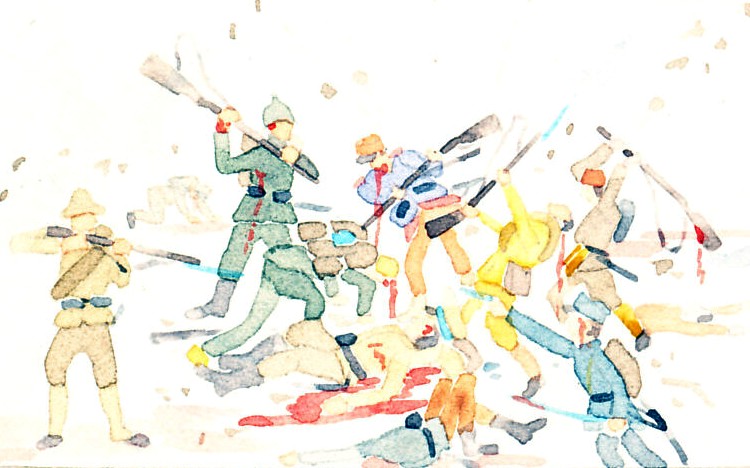Neutral Romania, personified as a woman in national dress, raises the Romanian flag before her wealth of wheat, baskets of bread, and barrels of food and oil, barring the path of a train from which a Turkish fez peeps. The illustration is not geographically accurate, as Romania did not share a border with Turkey, but did (and does) with Bulgaria, her southern neighbor, who peers over a hill to the right. Over Romania's right shoulder, the spiked helmet of Germany and shako of Austria-Hungary rise above the horizon. By Em. DuPuis, 1916. Romania formally set aside the prudence referred to in the caption on August 27, 1916 when she declared war on Austria-Hungary; she was soon at war with Germany, Bulgaria, and Turkey as well.

Signed Em. DuPuis, 1916.
Prudence est mère de Sécurité . . . Roumanie
Prudence is the mother of Security
Reverse:
Visé Paris No. 116.
Logo: Paris Color 152 Quai de Jemmapes
Carte Postale
Other views:
Larger
